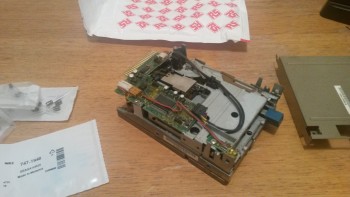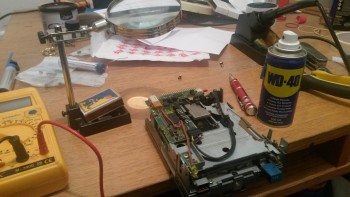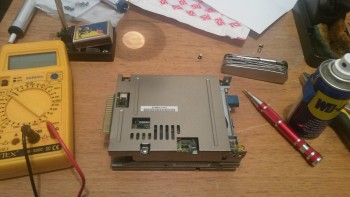First post, by 386_junkie
- Rank
- Oldbie
I’m sure there are probably a few here that have maybe had to do this themselves at some point even though I can’t find any threads / posts on the subject.
In any case, I bought not long ago for a reasonable price an IBM PS/2 Model 80 (tower) which was in need of service… getting the dead battery/cleared CMOS (162/163) error messages upon boot.
I replaced the battery of course and attempted to load the reference disk from floppy but it could not read the disk at boot for some strange reason and instead opted to boot into the ROM basic.
I managed to figure out the trouble folk have with IBM floppy drives (particularly the Mitsubishi’s) over time, and the drying out of the dielectric in the electrolytic capacitors on the floppy PCB. So I had a choice… spend $50+ on a new drive that may at some point have the same problem or attempt to repair the drive on hand. Looking at the costs of some of the drives these days the latter choice was the clear winner.
So, after removing the old electrolytics and sourcing the replacements… I set about the repair, see pictures below.
It turned out after soldering in the new and testing the old… that only 1 cap still worked and was still in spec. Of the other 4… 2 were blown open, and the other 2 were still bridged though were quite out of spec… well on their way out for sure.
I also applied (being careful of the electronics) some WD40 as the drives mechanism for slotting in the floppy / eject was not working too well... now the floppy's are flying out like projectiles!
I have not yet returned or tested the drive in the Model 80, but will in the coming days and return with my findings.







